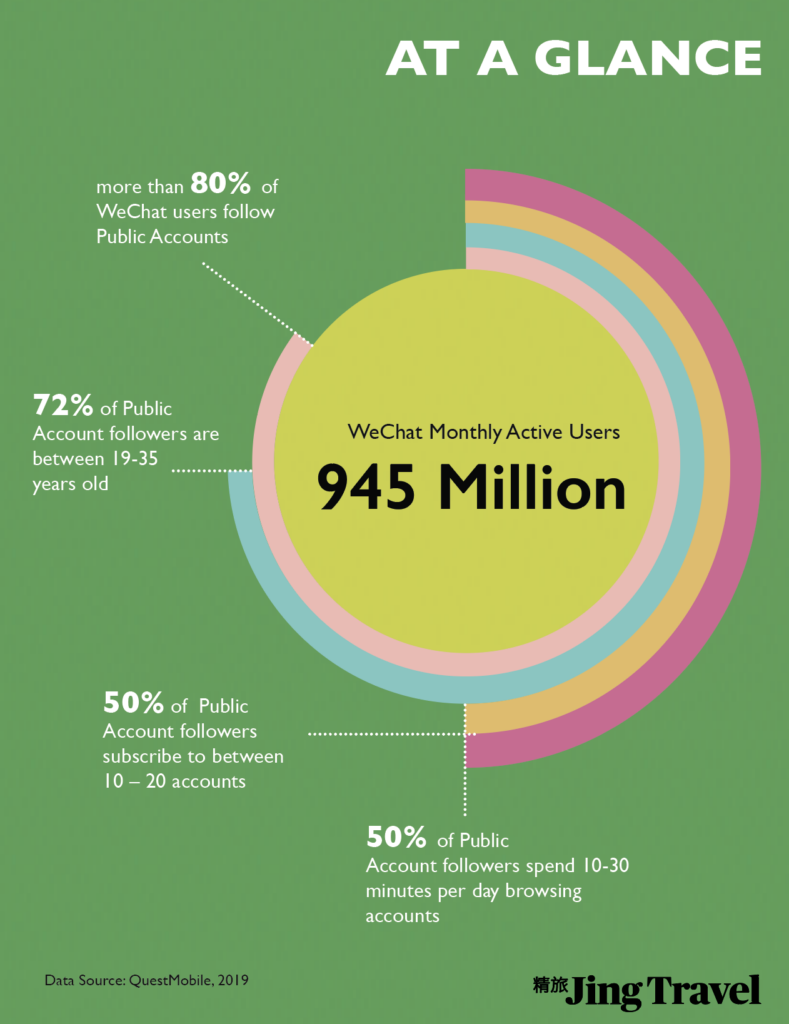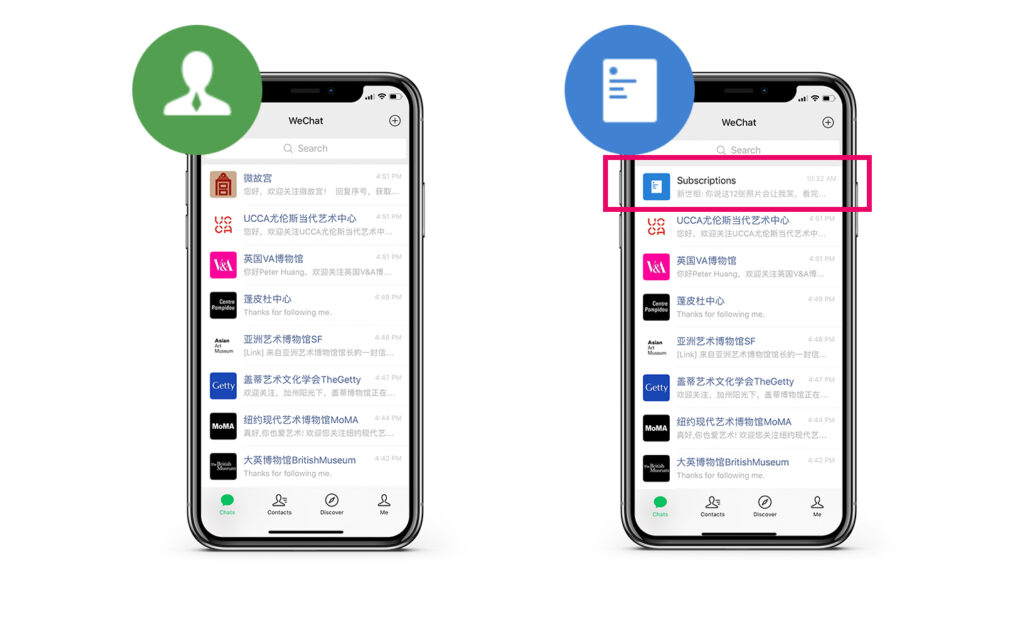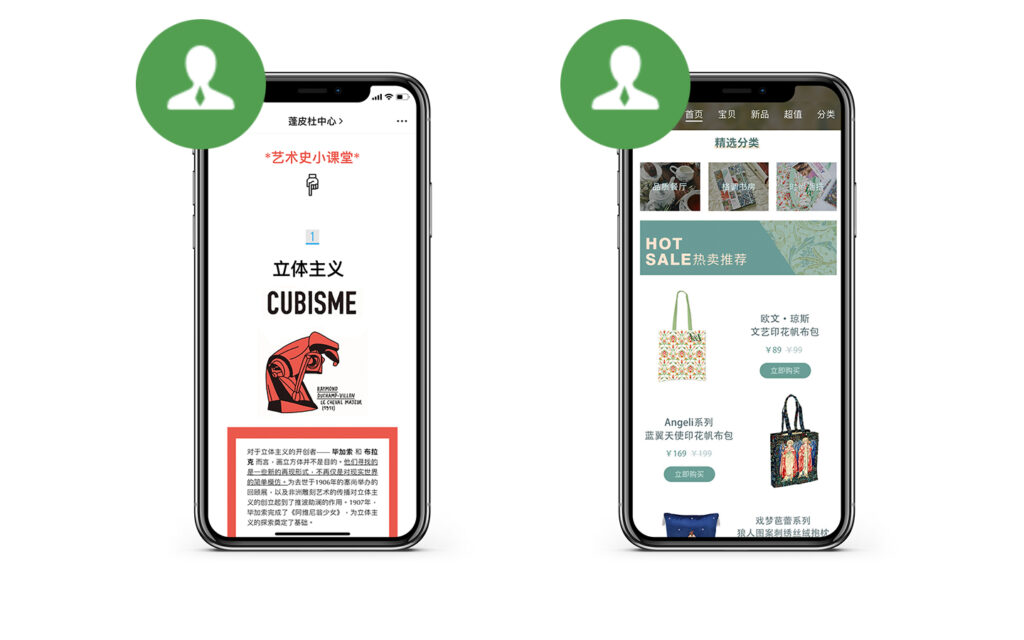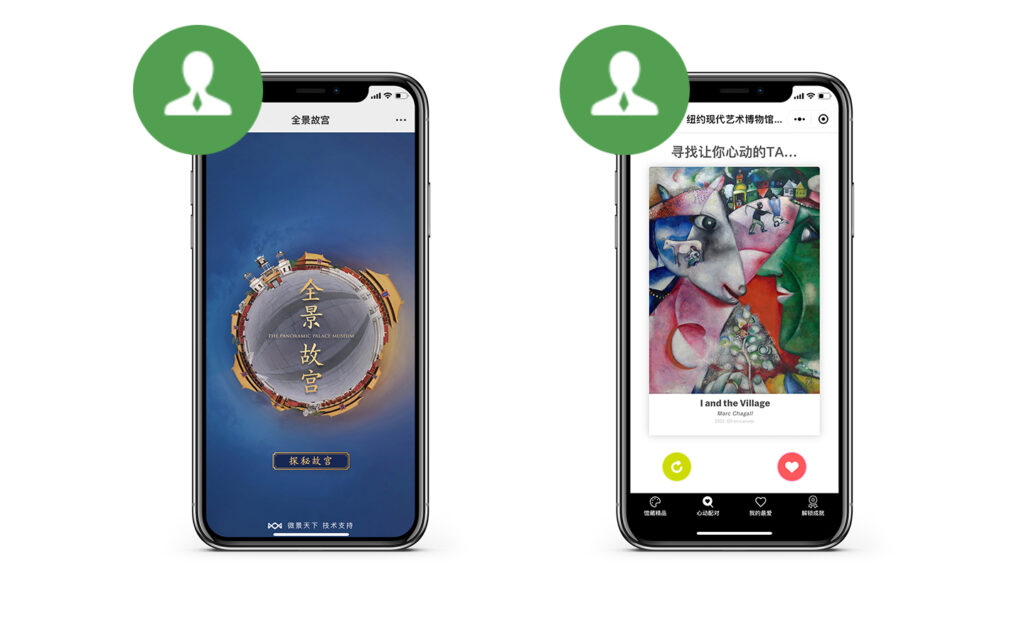In China, few visits to cultural destinations take place without the guiding hand of WeChat. From gargantuan state-run museums to private art galleries, Tencent’s multi-functional application has become an essential channel for marketing, broadcasting, and generating revenue.
Consider the following sequence: a user reads an exhibition article on a museum’s official account and purchases a ticket, once onsite, the user browses maps, delves into the exhibition with audio-visual content, buys a souvenir, and posts about the experience — all using WeChat.
For global cultural institutions hoping to develop brand awareness, boost audience engagement, and welcome Chinese visitors dynamically, no tool is more valuable than WeChat Official Accounts.

From state-run museums, to boutique art galleries, to cinema and restaurant chains, the full spectrum of China’s entertainment sector use WeChat Official Accounts to keep audiences informed, offer special promotions, facilitate visits, and much more. Image: Peter Huang
Overview — WeChat Official Accounts
WeChat offers different type of Official Accounts and the first step is to determine which one(s) best match your institution’s needs;

Public Accounts are a cross-industry tool to engage WeChat’s 1 billion users, in 2020 there were 20 million accounts up from 17 million in 2017. Image: Peter Huang
Service vs. Subscription — What are They?
Service Accounts, by definition, focus on providing organizations with a powerful range of tools to reach and better serve WeChat users. The home of China’s Terracotta Army, for example, uses its account to upload online exhibitions, publish articles, and sell souvenirs through an e-commerce store.
Subscription Accounts, by contrast, focus on delivering content and provide organizations a powerful new media tool to deliver stories to readership. The Museum of Contemporary Art Shanghai (MoCA), for example, publishes upwards of 10 stories a month covering everything from in-house exhibitions, connecting the museum to seasonal topics, and outlining educational programs.
Service vs. Subscription — What are the Differences?
Visibility
Service Account posts appear in users’ chat section alongside messages from friends. This makes posts highly visible.
Subscription Account posts appear in a stacked “Subscription” folder in users’ chat section. This makes browsing Subscription Account content a two step process; users must first open a folder and then select the desired accounts. Users are alerted to new posts with a red dot that appears beside the Subscription folder.

Left: Service Accounts appear in the “Chat” section as friends — here, this includes Palace Museum, V&A, and MoMA. Right: Subscription Accounts are not immediately visible in the “Chat” section — users must open the Subscription folder to discover new posts. Image: Peter Huang.
Posting & Purpose
Service Accounts can post four times per month, but can post up to four articles at a time.
Subscription Accounts can post once a day, allowing for regular communication with followers.
If creating content and cultivating an audience are the core reasons for launching on WeChat, opening a Subscription Account is suitable.
However, if the goal is to offer users a broad range of tools, such as incorporating e-commerce and geolocation functions (see below), a Service Account is the better choice.
While most cultural institutions opt for Service Accounts, The Louvre and Australia’s National Gallery of Victoria (NGV) are examples of prominent cultural institutions that have chosen Subscription Accounts, which they use to regularly connect with readership.

Left: British Museum has a Service Account and boasts one of the most read accounts among non-Chinese museums, averaging more than 5,000 reads per month. Right: Posts on NGV’s Subscription Account average more than 2,000 per month. Image: Peter Huang.
Functions
Service Accounts and Subscription Accounts alike boast a broad range of functionalities. Features such as maps, customer service, and ticketing are easily accessed through a pop-up menu. These are highly customizable, allowing institutions to include or omit functions that best service the purpose.
For instance, while The Louvre uses a Subscription Account and The British Museum uses a Service Account, both offer institutional background, collection highlights, and exhibition information through their pop-up menus.
Service Accounts, as the name suggests, offer a more expansive range of sales and service functions. This includes supporting e-commerce, connection to WeChat Pay, collecting user data, and enabling geolocation.

Left: users can browse MoMA’s WeChat account to learn about upcoming and ongoing exhibitions. Right: Getty’s WeChat includes a messaging function through which users receive audio recordings. Image: Peter Huang
London’s Victoria & Albert Museum (V&A), for example, sells tickets to special exhibitions and connects to its gift shop on Tmall, Alibaba’s B2C e-commerce platform. Beijing’s Palace Museum, meanwhile, offers pop-up product offerings purchasable with WeChat Pay. It also uses the geolocation feature to advise visitors on the smoothest route through the giant palace complex.

Left: Centre Pompidou launched a Mini Program in Jan 2020, through which it sells entrance tickets and offers curator audio guides. Right: V&A’s IP products have proved hugely popular with Chinese millennials and are only a couple of taps away through its WeChat account. The market for cultural products across e-commerce giant Alibaba’s platforms was valued at 2 billion RMB in late 2019. Image: Peter Huang.
Cost
Launching on WeChat firstly requires registering as a Wholly Foreign Owned Enterprise in China. Using an overseas licence, Tencent will charge $99 as a verification fee.
The main running costs is retaining an outside agency to manage your WeChat account, unless there’s the capability to do so in-house.
Revenue
The integration and widespread use of WeChat’s own payment system, WeChat Pay, is what distinguishes it from all other social media platforms.
With more than 900 million WeChat Pay users globally, enabling payment through a Service Account significantly lowers the payment barrier both on and offsite. From allowing users to book tickets and buy from a connected e-commerce page to easing the purchase of an onsite coffee, Service Accounts will aid the process of receiving revenue from Chinese audiences.
In 2019, Palace Museum generated $30,000 in a single evening after releasing a special edition lipstick through its WeChat account.
A handful of global museums, such as The Metropolitan Museum of Art and the British Museum, use WeChat posts to promote special IP products, which are purchasable on connecting e-commerce sites.
While it is possible to connect WeChat users to ticketing pages on a pop-up menu, as NGV does, if revenue is a priority, a Service Account is the better option.
Mini Programs — New Possibilities
Public WeChat Accounts gain additional tools for engaging and monetizing readership through creating highly customizable Mini Programs.
Essentially non-downloadable applications that run within WeChat’s ecosystem, Mini Programs are connected to Service Accounts and are often placed as an icon at the top of an account for ease of access. Fully-tailored, they can be sculpted to reflect the specific needs and goals of institutions.
The range of functions offered by Mini Programs is stunning. The Palace Museum offers a 360 degree panorama experience, MoMA has gamified collection highlights with a match-function inspired by dating apps, and Guggenheim’s edition allows visitors to create photo souvenirs.

Left: Palace Museum’s WeChat Mini Program platforms a panoramic tour of China’s Imperial Palace. Right: MoMA’s Mini Program includes a “Tinder-esque” match function for artwork. Image: Peter Huang
Conclusion
Choosing a suitable WeChat Official Account is the first step in an institution’s journey on China’s most popular social media platform.
In essence, a Subscription Account is suitable for those focused on creating quality content at a high frequency. For greater versatility and on-site interaction, a Service Account is the better choice.
WeChat is the ubiquitous tool for museums hoping to engage with Chinese audiences. Chinese audiences rely on WeChat to discover exciting exhibitions, browse collections, book tickets, and navigate the museum once onsite. It’s for this reason that Jing Travel publishes a monthly index that tracks how Chinese and international museums WeChat Official Accounts perform.
Words by Richard Whiddington



